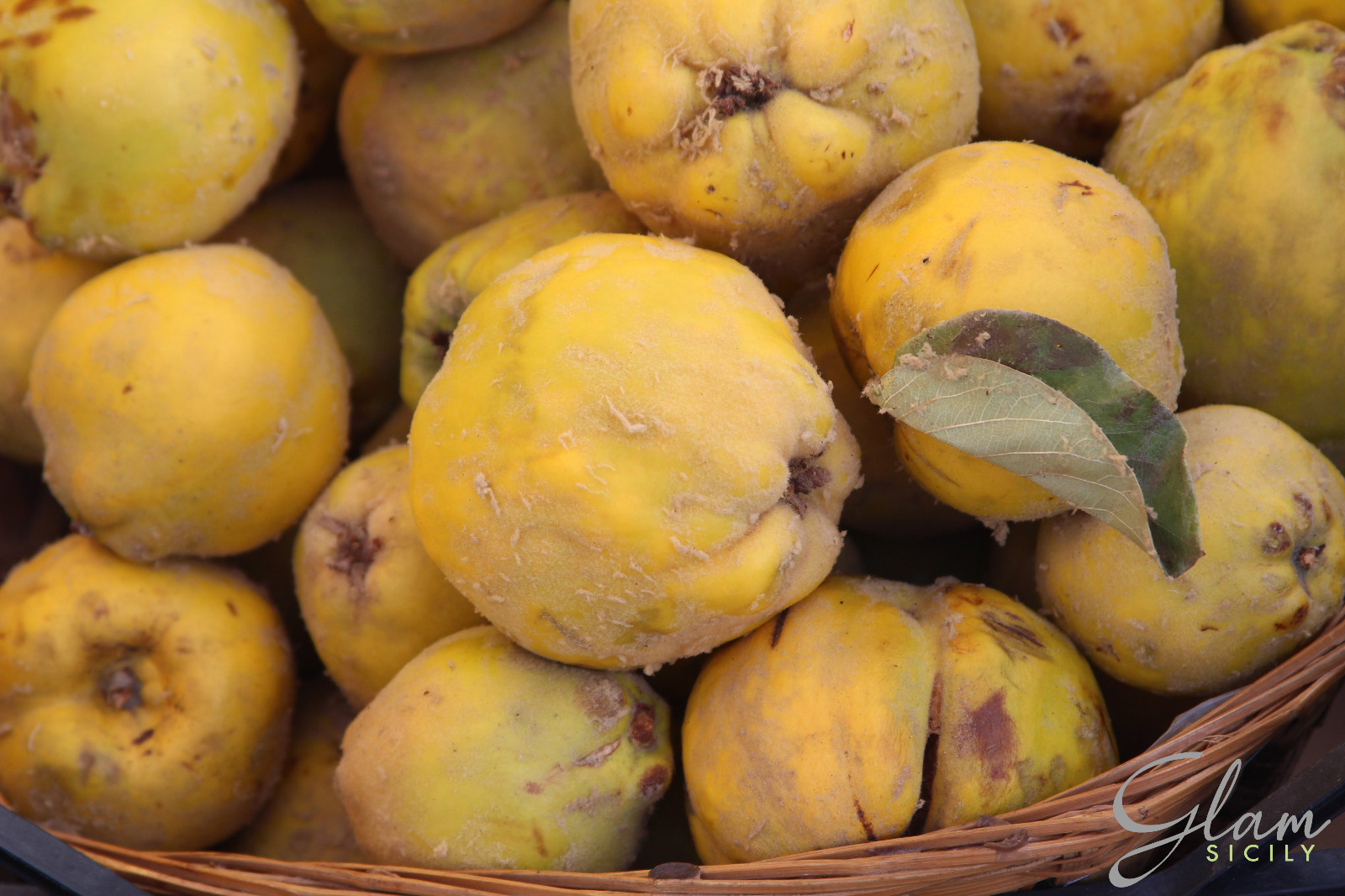In the countryside we had a Quince tree and every year I helped harvest them for Grandma ‘Nitta to prepare the Quince jelly! I was greedy. I liked it soft, spread on bread with butter! It is one of those delicious flavors that you love as a child and then accompanies you throughout your life! Our family tradition was to prepare it in a pot! We made at least 15 kg of Quince in jars that was distributed to all family members. It was suppose to last the families all year. In reality, being my daily breakfast, the preserves never reached one year! And I must say that I have never had a cavity, despite it being a concentrate of sugars! Today my children prefer the taste of Nutella, but I am managing to convert them to the simple and traditional tastes of Quince. I serve the Quince in the form of jelly, thanks to the recipe of Uncle Mario, and I must say that the kids enjoy it. Here I offer it to you below!
But first I would like to tell you a little of its story!
THE TRADITION
Quinces are particular fruits: large and irregularly shaped, they give off a very intense aroma, but they are not eaten raw, due to their excessively sour taste.
Quinces are usually thought to be a hybrid of the more common apples and pears, but this is not the case. The tree on which this fruit is born takes the name of Quince: this belongs to the Rosaceae, the botanical family which also includes apple and pear trees, but is classified within the genus Cydonia, a very different sub-category of plants.
The Quince has a very ancient history: already cultivated by the Babylonians and Greeks, it is among the fruit trees that man has known the longest. It then spread throughout Asia Minor and the Caucasus, and finally appeared in the Mediterranean area. Italy is among the countries where the Quince finds very fertile ground to take root, and they grow spontaneously in abundance. In Italy, peasant families for a long time have used Quince as fragrance for their cabinets, until they thought of cooking them by combining them with sugar to neutralize the acrid taste. The Quince is a very particular type of apple jam with a firm consistency, born in peasant kitchens, becoming a recipe of true Italian tradition. Quince apples are known to have beneficial properties in the case of intestinal disorders: already in the Middle Ages and the Renaissance, doctors recommended taking the juice of this fruit in case of enteric discomfort. When raw, Quince is rich in vitamin C, a substance that is dispersed during the cooking phase of the Quince. This delicious dessert also remains rich in fiber!

RECIPE
INGREDIENTS
• 1.5 kg of quinces (1 kg net)
• 1000 grams of sugar
• 500 grams of cane sugar
• water
• 1 lemon
• extravirgin olive oil
PREPARATION
Start cleaning the apples by rubbing them to remove the fluff, then cut them into wedges without peeling them and remove the core.
Now cut the apples into regular cubes
As you cut them, put them in a bowl with the lemon juice.
Then transfer them to a saucepan with water and cook for 30 minutes, turning them from time to time.
Recover the pulp by passing the apples with a vegetable mill.
Then put it in a saucepan with white sugar and brown sugar.
Cook for another 30 minutes, making the pulp thicken. The mixture will be good when, taking a spoonful, it does not fall.
Then transfer it into oiled molds, or into a rectangular container, and let it cool for two days. Cut into squares and roll in sugar to create candies.
Your Quince is ready to be enjoyed as jellies. My grandmother placed it in the “furmine,” which were small terracotta containers with reliefs at the base that gave the Quince cheese different shapes and designs.






Leave A Comment